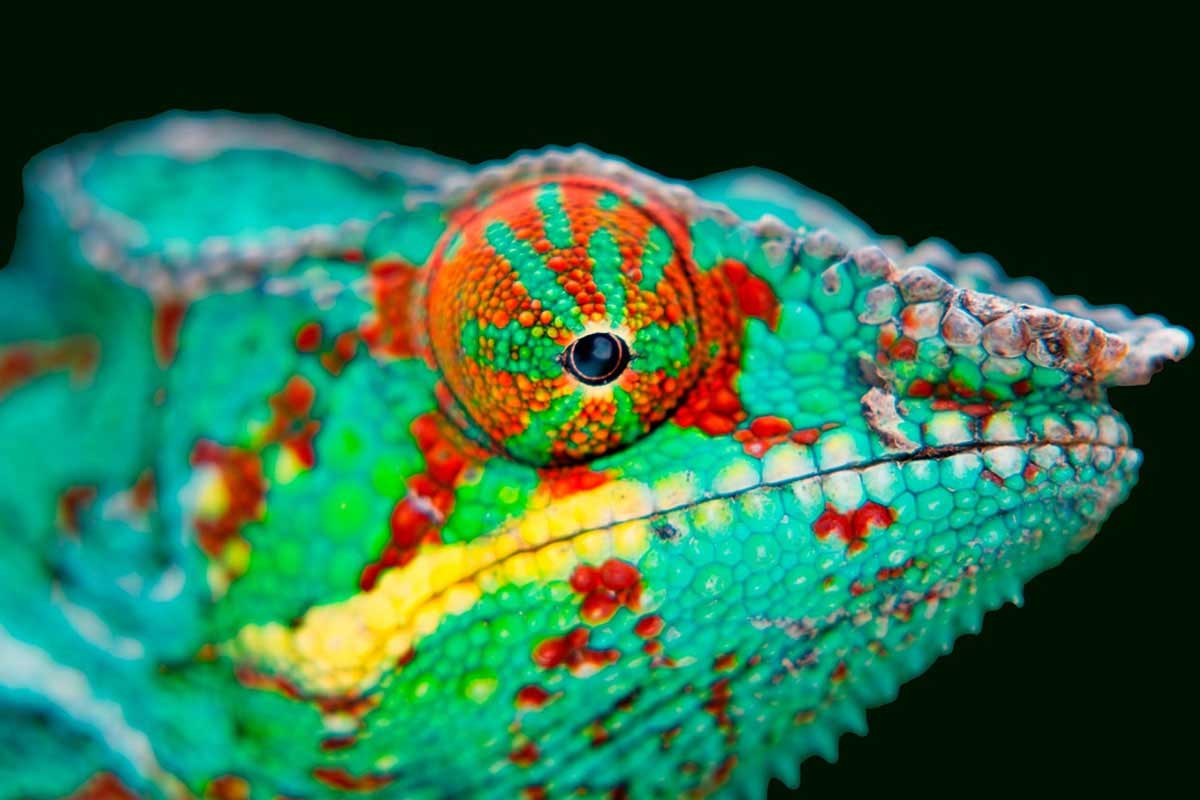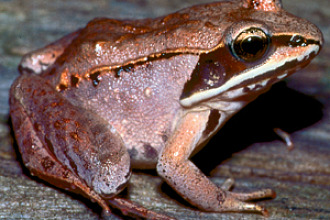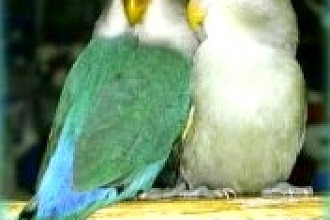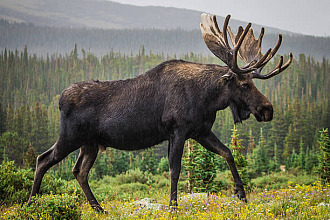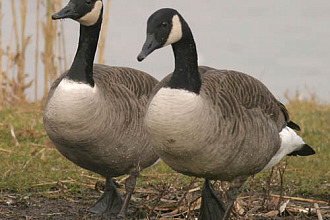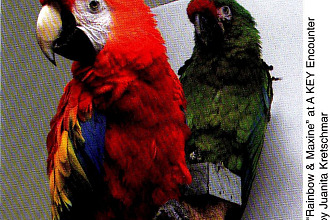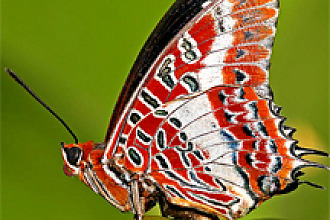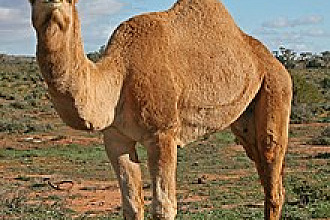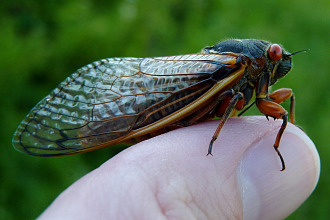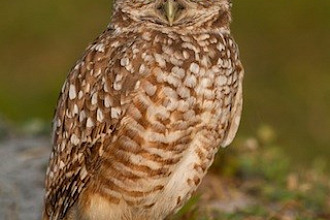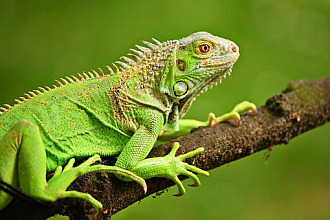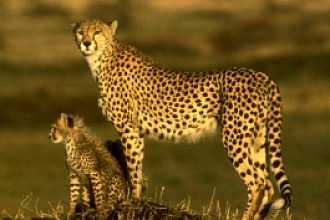There has been documentation of nearly 180 different species of chameleons in this world—each unique in its own way—but all chameleons share some not-by-accident characteristics.
We can begin with its eyes that sit in little holders that remind one of a gun turret—each able to focus independent of the other while turning around in any direction they care to look! For example, one eye might be watching carefully behind and to the left, while the other, at the same time is observing everything in front or turning to the right. Not by accident they can cover a full 360° circle—alert to danger, while also spotting lunch flying by! You got that right... they enjoy catching insects of every type from the top of a tree! With their not-by-accident ability to focus both eyes back together quickly when needed, in an instant they can hone in with stereoscopic vision that includes depth perception—and with that, their next Creator-given apparatus, their tongue, makes its appearance.
But watching the tongue is no easy task. If you're close enough you can see its not-by-accident design that includes a gooey covering of mucus on its tip as the tongue slowly appears at the front of the chameleon's mouth. At first it seems almost like the tip of a paddle or spoon laden with glue. But the next instant—when that bulbous end gets past the lips—the rest of the tongue is slender as it is projected at a speed faster than human eyesight can follow! (It touches its prey at about 30-thousandths of a second—and we only know this by researchers reviewing in slow motion movies made of this movement.) It definitely is all over for whatever insect that was just snatched, brought back into the mouth, crunched by the chameleon's jaws, and devoured. That tongue, incidentally, is at least one and one-half times the length of its body—and its length is not by accident! (Do the math: i.e. the tongue of a 12" chameleon is 18" long!)
The majority of chameleons are known for their fascinating changes of color. Most are not trying to camouflage themselves when in danger. Research demonstrates that while in some species that may be the case, much of their color change is connected with communication of physical responses called "social signaling" as well as brighter shades being an indication of a heightened emotional state—perhaps fear or aggression—or just responding to the sun's warmth. Whatever the case, their Creator, not by accident, gave the chameleon layers of cells called chromatophores. These include an upper layer of skin cells that carry bits of red and yellow pigment, the next layer down carries cells with blue pigment and the deepest cell level carries darker tones of pigment. Sometimes a cell's pigment is simply in the center, while other times the pigment spreads throughout the cell. Normally a chameleon, basking in sunshine in the top of trees, appears green—due to the blue of the secondary layer mixing with the yellow of the top cell layer. These changing shades of color that match their surroundings so accurately is an obvious not by accident demonstration of well thought-out planning by their Designer!
Whether it's a chameleon an inch and a half long or a big fellow two feet in length, chameleons have an amazing variety of abilities also—including a not by accident mechanism in just one chameleon species that enables it to shoot blood from its eye into the face of an attacker many times larger in size—sending that predator fleeing for cover! It's a unique protection design from a Creator whose intellect is awesomely deserving of our worship. He's our loving God and Savior—worth getting to know better each day!
"NOT BY ACCIDENT" (c) Juanita Kretschmar is used by permission and was first published in the book "Not By Accident 3 page 11
Picture originally found here

